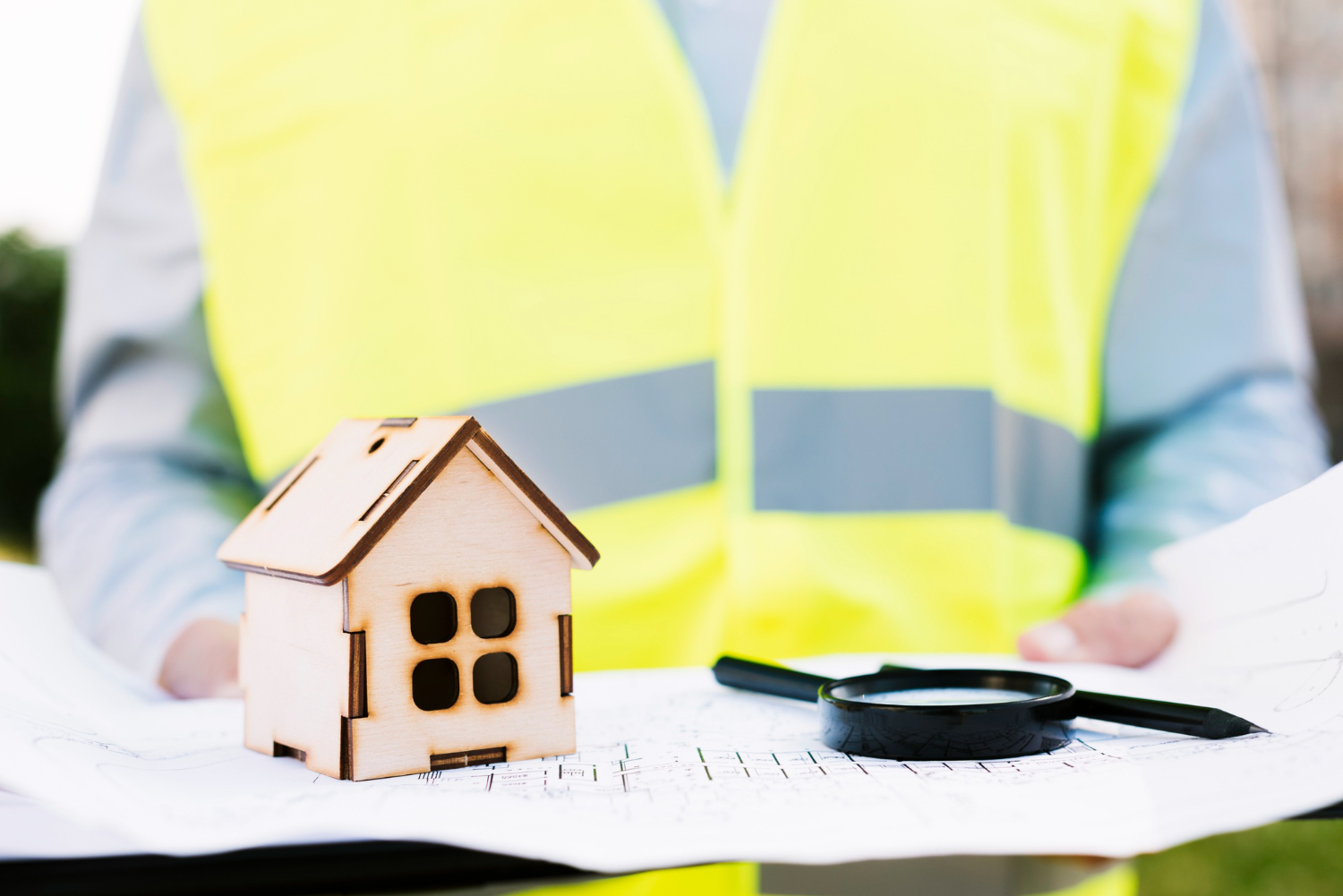Top Structural and Safety Concerns Found in Detroit Home Inspections
Detroit’s housing landscape is as diverse as its history. From early 1900s craftsman homes to post-war bungalows and modern new...

Detroit’s housing landscape is as diverse as its history. From early 1900s craftsman homes to post-war bungalows and modern new builds, each property tells a story — and with every story comes a unique set of structural and safety challenges. Whether you’re buying, selling, or maintaining a property, understanding what typically comes up during a home inspection in Detroit can save you from costly surprises and ensure a safer living environment.
Detroit’s varying weather patterns, aging housing stock, and mix of renovated and neglected properties mean inspectors often uncover recurring issues related to structure, safety, and maintenance. In this guide, we’ll break down the most common concerns found during inspections in Detroit homes, what they mean for homeowners, and how to address them before they become bigger problems.
Understanding the Role of a Home Inspection
A home inspection is a comprehensive evaluation of a property’s visible and accessible systems, structure, and safety features. It’s not just for homebuyers — even long-term homeowners benefit from periodic inspections to identify developing issues early.
Why Home Inspections Are Crucial in Detroit
Detroit’s housing market features a mix of old and new, with many properties built before modern construction standards and building codes. Factors such as harsh winters, fluctuating humidity, and occasional flooding contribute to wear and tear that isn’t always visible.
A home inspection in Detroit helps identify these underlying concerns, from foundation shifts and roof deterioration to outdated electrical systems that may pose safety hazards.
1. Foundation and Structural Problems
Common Causes
Many Detroit homes were constructed decades ago, and time inevitably affects their foundations. Seasonal freeze-thaw cycles, poor drainage, and soil movement often cause cracks, uneven settling, or shifting.
What Inspectors Look For
- Horizontal or stair-step cracks in basement walls
- Uneven floors or misaligned doors and windows
- Gaps around window frames or ceilings
- Signs of water intrusion in crawl spaces or basements
Implications of Findings
Foundation problems can lead to structural instability and costly repairs. Minor settling cracks may be normal, but widening gaps or bowed walls indicate potential structural failure. Addressing drainage issues, grading, or installing sump pumps may be required to stabilize the home.
2. Roof Deterioration and Leaks
Why Roof Issues Are Common in Detroit
Given Detroit’s heavy snowfall in winter and humid summers, roofs face significant wear. Older homes often have asphalt shingles that reach the end of their lifespan without proper maintenance.
Inspection Focus Areas
- Missing, curled, or damaged shingles
- Signs of leaks or stains in the attic
- Deteriorated flashing around chimneys and vents
- Inadequate insulation or ventilation
Consequences of Roof Problems
Roof damage can quickly lead to water infiltration, mold growth, and wood rot in structural components. Ignoring roof maintenance can shorten the lifespan of the structure and create safety hazards from weakened rafters or ceilings.
3. Electrical System Hazards
The Challenge of Aging Wiring
Many older Detroit homes still contain original electrical systems — including outdated knob-and-tube or aluminum wiring — that may not meet modern safety standards.
Inspection Checklist
- Old fuse boxes instead of circuit breakers
- Exposed wiring or improper splices
- Lack of GFCI outlets in kitchens, bathrooms, and basements
- Overloaded circuits or undersized service panels
Implications for Safety
Outdated or improperly modified wiring is a major fire risk. Inspectors often recommend upgrading electrical systems to modern standards to handle today’s power demands safely.
Homeowners should treat electrical findings as a high-priority concern, especially when planning renovations or appliance upgrades.
4. Plumbing Leaks and Water Damage
Common Plumbing Issues in Detroit Homes
Detroit’s older neighborhoods feature galvanized steel or cast-iron plumbing systems that corrode over time, leading to reduced water pressure, leaks, and even contamination.
What Inspectors Examine
- Visible corrosion or rust on pipes
- Leaks under sinks or around toilets
- Signs of water stains on ceilings or walls
- Improper drainage or slow-flowing fixtures
Potential Consequences
Hidden leaks contribute to mold growth, wood rot, and compromised structural materials. In extreme cases, burst pipes during winter can cause extensive flooding and thousands in damages.
Replacing outdated plumbing with copper or PEX piping is often recommended to improve both safety and efficiency.
5. HVAC System Deficiencies
Age and Efficiency Concerns
Heating and cooling systems in Detroit homes are often decades old. Harsh winters demand efficient heating systems, and aging furnaces or boilers can become both costly and dangerous.
Inspection Focus
- Furnace age and maintenance history
- Proper venting of exhaust gases
- Condition of ductwork and air filters
- Presence of carbon monoxide leaks
Health and Safety Implications
An improperly maintained HVAC system not only drives up utility costs but can also pose serious health risks. Carbon monoxide leaks or inadequate ventilation can create indoor air quality issues that go unnoticed without regular inspection.
6. Mold and Moisture Problems
Why Mold Is Common in Detroit
With its humid summers and older housing stock, Detroit homes often struggle with moisture control. Basements and attics are prime locations for hidden mold growth.
Inspector Observations
- Musty odors or discoloration on walls
- Water intrusion near foundation walls
- Condensation on windows or pipes
- Poor ventilation in bathrooms or laundry areas
Long-Term Implications
Mold not only damages materials but also impacts indoor air quality. Prolonged exposure can trigger respiratory issues and allergies. Homeowners should address moisture sources quickly—such as fixing leaks or improving ventilation—to prevent recurrence.
7. Roof and Attic Ventilation Issues
Common Ventilation Mistakes
Improper attic ventilation can trap heat and moisture, leading to premature roof deterioration and mold growth.
Inspector Checklist
- Adequate intake and exhaust vents
- Insulation covering vents
- Signs of condensation on rafters or sheathing
Impact on the Home
Without proper airflow, energy efficiency drops, and roofing materials degrade faster. Homeowners may notice higher heating bills and uneven indoor temperatures. Simple improvements in attic ventilation can significantly extend roof life.
8. Window and Door Deficiencies
Common Findings
Older homes often have wood-framed windows and doors that suffer from warping, rot, or poor insulation.
Inspection Points
- Gaps allowing drafts or pest entry
- Broken seals in double-pane glass
- Deteriorated weather stripping or caulking
- Difficult-to-open or sticking frames
Implications
Poorly sealed windows and doors not only reduce comfort but also raise energy costs. Over time, water intrusion through gaps can damage framing and finishes. Replacing or restoring them improves both efficiency and structural integrity.
9. Deck and Porch Safety Concerns
Why It Matters
Many Detroit homes feature charming front porches or backyard decks, but these structures often show significant age-related wear.
What Inspectors Check
- Loose or deteriorated railings and supports
- Rotted wood components
- Improper attachment to the main structure
- Signs of water damage or pest activity
Safety Implications
Deck collapses and porch failures can cause serious injuries. Findings related to instability or decay should be repaired immediately to maintain occupant safety and property value.
10. Fire Safety and Egress Issues
Critical Safety Points
A surprising number of older homes lack adequate fire safety measures or proper egress routes in basements and upper levels.
Inspection Observations
- Missing smoke and carbon monoxide detectors
- Windows too small or obstructed for emergency escape
- Inaccessible exits or cluttered pathways
Potential Consequences
In an emergency, these deficiencies can endanger lives. Inspectors typically recommend upgrading detectors, widening basement egress windows, and ensuring all rooms have safe exits.
11. Asbestos and Lead-Based Paint Risks
Historic Homes and Hidden Hazards
Homes built before 1978 often contain lead-based paint or asbestos materials, especially in insulation, flooring, and ceiling tiles.
Inspector’s Focus
While inspectors don’t perform laboratory testing during standard evaluations, they identify suspect materials for further analysis by certified specialists.
Why It Matters
Both asbestos and lead pose significant health risks when disturbed. Proper containment and professional remediation are critical during renovations or repairs in older Detroit homes.
12. Pest and Termite Damage
Frequent Pest Problems
Rodents, carpenter ants, and termites are frequent culprits in Detroit homes, particularly in older wooden structures.
Inspection Signs
- Chewed wiring or insulation
- Mud tubes along foundations (termite activity)
- Droppings or nesting materials in basements or attics
Long-Term Implications
Unchecked infestations can lead to costly structural repairs. Addressing entry points and maintaining cleanliness are key preventive measures.
13. Drainage and Grading Issues
Why It’s a Major Concern
Poor grading or ineffective gutters allow water to pool around the foundation, causing basement leaks and structural weakening.
Inspection Notes
- Downspouts draining too close to walls
- Erosion or sloping toward the house
- Standing water after rainfall
Implications
Water is the root cause of many structural issues. Correcting grading, extending downspouts, or adding French drains can prevent future foundation damage.
14. Chimney and Fireplace Concerns
Common Findings
Detroit’s historic homes often feature beautiful brick chimneys that, over time, deteriorate due to weather exposure and age.
Inspection Focus
- Cracked masonry or missing mortar
- Creosote buildup in flues
- Damaged chimney caps or flashing
Safety Considerations
Compromised chimneys can lead to fire hazards or carbon monoxide leaks. Annual inspections and maintenance help preserve both safety and aesthetic appeal.
The Bottom Line
A home inspection in Detroit offers far more than a checklist—it’s a roadmap for protecting your investment and your family’s safety. From crumbling foundations to aging electrical systems, each finding tells part of a home’s story and reveals opportunities for improvement.
Detroit’s rich architectural history comes with unique maintenance challenges, but with awareness and proactive care, homeowners can preserve these properties for generations to come. By understanding the most common structural and safety concerns, you’re better equipped to make informed decisions—whether you’re buying your first home, managing a rental property, or maintaining a family residence.
Also read:
Why Commercial Building Signage Matters for Every Business Property



